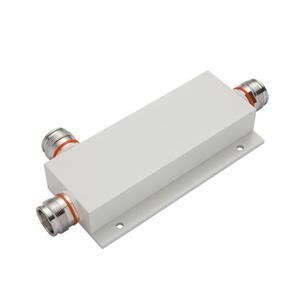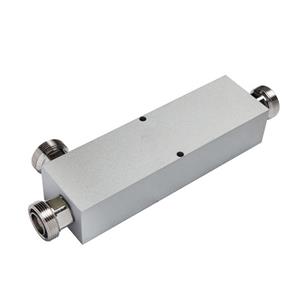Discussion on key technologies of 5G+4G wireless network collaboration and networking
1 Favorable conditions for 5G+4G collaborative construction
5G network construction is the national strategy of my country's network power. 5G network is the key infrastructure for realizing industrial innovation and upgrading, which is of great significance. After years of accumulation, Chinese operators have the largest number of wireless base station sites in the world. At the same time, different from the 1G/2G/3G/4G wireless network technology upgrade, the operator's upgrade from 4G to 5G network has inherent huge advantages. In addition to the rich site resources that can be shared, it also includes the following sharing capabilities.
(1) Frequency sharing: The 5G network has allocated licenses for multiple frequency bands, of which the 2.6GHz frequency band is shared by 5G and 4G with a total of 160MHz spectrum resources from 2515 to 2675MHz, which not only enables operators to have lower wireless link losses and saves network construction The advantages of investment can also make full use of the existing 4G 2.6GHz frequency band operating experience to manage 5G networks, and at the same time, it can also give full play to the driving ability of the industry chain to maximize the common mode of equipment capabilities and terminal capabilities.
(2) Equipment sharing: Based on the sharing of spectrum resources and bandwidth, develop 5G+4G common hardware equipment, realize the ability of baseband to have different standard conversion (also called mode conversion), and build 5G network while taking into account the rich network capabilities and 4G business needs. Maximize equipment utilization efficiency.
(3) Service capability: The overall capacity of the 4G network is still growing, the shortage of spectrum resources in local areas is becoming increasingly prominent, and the pressure on user service perception guarantee is increasing. 5G eMBB and 4G eMBB are both mobile data services, which can be shared with 4G networks. At the same time, 5G networks can provide at least ten times the peak rate of 4G, millisecond-level transmission delay, and hundreds of billions of connection capabilities. Therefore, While synergistically sharing network capabilities, the two can better meet the practical needs of long-term joint development of converged and differentiated services.
4G is in the ascendant, 5G has arrived, and 5G+4G will coexist for a long time in terms of network and business support capabilities. This paper will explore the key technologies for the coordinated development of 5G+4G wireless networks from the technical level of wireless network networking planning, which can fully explore the existing advantages of 4G networks and give full play to the new capabilities of 5G technology and networks. Together, they can realize network construction and operation that reduces costs and increases efficiency, and at the same time is conducive to network evolution and development.
2 Analysis of key technologies in the collaborative construction of 5G+4G network coverage
The main goal of wireless network coverage is to focus on the value area of network construction, and to achieve the network coverage goal with the most reasonable network structure, the best equipment selection and the best investment cost performance as much as possible. With the simultaneous development of user needs and technological evolution, wireless cellular networks are gradually evolving to a new type of networking architecture. Under the condition that the existing outdoor cellular network structure is relatively stable, in the early stage of 5G+4G collaborative development, the following key content.
2.1 5G+4G site resource sharing technology
2.1.1 Make full use of existing 5G+4G site sharing
In the shared 2.6GHz frequency band, the 5G network coverage and service capabilities are better than the 4G standard. Therefore, 4G and 5G have the ability to share sites. In terms of networking planning technology, the existing base station site equipment room can be fully utilized to develop fast, low-cost cost to build a network.
On this basis, different from the previous network-wide standardized index network construction goals, 5G network construction can be based on "1:1" shared sites to achieve flexible index network construction. This kind of network construction idea is based on the 4G original site upgrade to 5G, the network coverage and service indicators will be better than 4G, and considering different scenarios, the distance between 4G standard macro sites is different, so the 5G target network planning macro site The spacing can be based on reality, based on the full stock of physical sites, with different planning indicators (for example, challenge indicators, benchmark indicators, and minimum indicators can be set separately) as the goal, to screen ideal structural sites and adapt to different areas. The best cost-effective solution to ensure investment efficiency.
2.1.2 Tianmian Sharing
After years of development and technological iterative updating, the public mobile communication network has problems such as many 2G/3G/4G antenna points and limited space. Because of its technical characteristics, 5G AAU needs to occupy one antenna alone, so it is necessary to integrate and integrate the 4G/5G antenna feeder system. 1 pair for 5G or 1 pair for 4G and 5G. Based on the principle of effective matching and moderate advancement, the supporting construction is carried out accurately, and the integration of existing resources and future development needs can be realized by designing a reasonable antenna feeder renovation plan, which can accurately construct and reduce rent and construction costs.
2.2 5G+4G device sharing technology
2.2.1 Sharing of device capabilities
Different from the evolution of 2G to 3G and 3G to 4G network standard, the 5G network is based on the same spectrum resources as the existing mature 4G network, which can give full play to the advantages of the mature industry chain of 4G D-band. Realize the common hardware of 5G+4G base station, so as to maximize the advance of 5G new technology.
In order to give full play to the capabilities of 5G equipment and take into account the needs of 4G networks, the following capabilities are required for new 5G equipment. The ability to support 160MHz full spectrum bandwidth, the ability to support SA/NSA common mode, the ability to support 5G+4G common mode/mode conversion, and the ability to support dynamic power sharing. At present, domestic and foreign manufacturers have completed equipment research and development, and can achieve large-scale supply.
In this case, new 5G base stations can share resources according to the method of "co-site, co-frame, board, and antenna" to avoid waste caused by independent construction, so as to give full play to the advantages of single-bit construction cost and operating cost.
2.2.2 Coordination of equipment construction
When 5G+4G co-located construction, the 5G base station can be constructed in a common-mode mode in which the 4G function is reversely activated to meet the business needs of the two networks at the same time. In terms of equipment arrangement, the original 4G D-band narrowband equipment (60MHz) RRU supports the same frequency band as 5G equipment, and it can be considered to be relocated to the peripheral area to continue to exert its capacity capacity, avoid equipment waste, and migrate to the new location in the demand area to fill the blindness Or supplementary capacity needs of existing sites. For physical sectors with rich bandwidth, the removal of the F-band can be simultaneously considered. At this time, the entire set of 4G baseband and radio frequency equipment can be used, and investment savings can be maximized. For platforms with fierce competition for aerial resources, after the removal of the narrowband RRU, there is a risk that the pole-mounted resources will be occupied, which should be avoided as much as possible.
If you do not remove the 4G D-band equipment, you need to consider the requirements of the equipment frequency and NR coordination. Since this part of the equipment only supports 60MHz bandwidth and partially overlaps with the initial 5G planned frequency band (the overlapped part is 40MHz bandwidth), and the frequency shifting capability of 4G equipment is relatively low. Poor, will inevitably result in a shorter life cycle. In addition, it is also necessary to consider that in this case, it is difficult for non-common-mode devices to realize technical means such as joint transmission and resource sharing in the frequency band, and the performance of 4G network will be affected to a certain extent.
According to the above analysis, when we carry out construction, we usually dismantle the old D-band equipment, and at the same time make up for the needs of 4G network coverage and capacity through 5G reverse activation of 4G functions.
2.3 5G+4G frequency sharing technology
In the early stage of 5G commercial use, the network bears less services. At this time, the allocation and adjustment of 160MHz spectrum resources between standards is realized through power sharing technology, taking into account the capacity requirements of the 5G+4G dual-standard network and improving the utilization of spectrum resources. With the gradual development of 5G network users and services, a single-standard 100MHz+60MHz target solution is finally formed.
2.3.1 Static frequency allocation and sharing technology
In the early stage of 5G construction, while carrying out 4G D-band frequency clearing, it is also necessary to consider the sharing and allocation scheme of 5G and 4G frequency resources. According to the principle of facing the present and meeting business needs first, bandwidth can be allocated on demand according to different business scenarios, and different frequency usage strategies can be adopted.
(1) Scenario 1: 4G extreme hotspots and scenarios in the initial stage of 5G services. At this time, the demand for 4G services is high, and priority is given to frequency allocation. It can be considered to reserve one more frequency point (4*20MHz) for 4G, and only 80MHz bandwidth is enabled for 5G.
(2) Scenario 2: 5G key scenarios such as the 5G experience priority service demonstration area. Consider giving priority to meeting 5G needs, using 2515~2615MHz frequencies to continuously open 100MHz from bottom to top, and 4G services as much as possible through FDD1800MHz and A-band re-farming to absorb business volume and reduce the frequency usage strategy for 4G D-band bandwidth requirements.
2.3.2 Dynamic Frequency Allocation Technology
Considering the need for long-term coexistence and coordinated development of 5G and 4G networks, in addition to the above static frequency allocation and sharing mechanisms, it is also necessary to promote the industry to realize the maturity and application of 5G equipment 2.6GHz frequency 5G+4G full dynamic sharing technology, and improve the flexibility of resource mobilization. and reduce network maintenance costs.
The 5G+4G dynamic spectrum sharing technology can flexibly adapt to the needs of cell services and realize random scheduling of two services on the same carrier, thereby more fully improving equipment utilization and 160MHz bandwidth frequency resource utilization efficiency. The implementation mechanism of carrier dynamic sharing is as follows.
Usually, the 5G carrier is configured with the working bandwidth (BWP) of 4 UEs, and the terminal is configured with 1 or 4 BWPs depending on the capability. When the UE accesses from BWP0, it depends on the initial configuration of the network to access the corresponding BWP. When the 5G carrier and 4G are covered together, the 5G+4G dynamic spectrum sharing technology enables the 5G carrier to realize dynamic adjustment to support multiple BWPs, so that the carrier can change between dormant and active states according to requirements. This process is the spectrum "Redistribution" process. The 5G+4G dynamic spectrum sharing technology can realize dynamic spectrum allocation at the level of more than a minute according to the judgment conditions that trigger "re-allocation".
2.4 5G+4G Power Sharing
2.4.1 Impact Analysis of Power Co-configuration
The current 5G base station equipment can reach a nominal power of 240W (long-term demand is 320W). Considering that the D-band allocates 100MHz bandwidth for 5G and 4G allocates 20MHz bandwidth, 5G can meet the 200W full power configuration. If 4G requires more carrier configurations, there will be power constraints. At this time, 5G+4G power allocation needs to be considered to maximize network performance.




